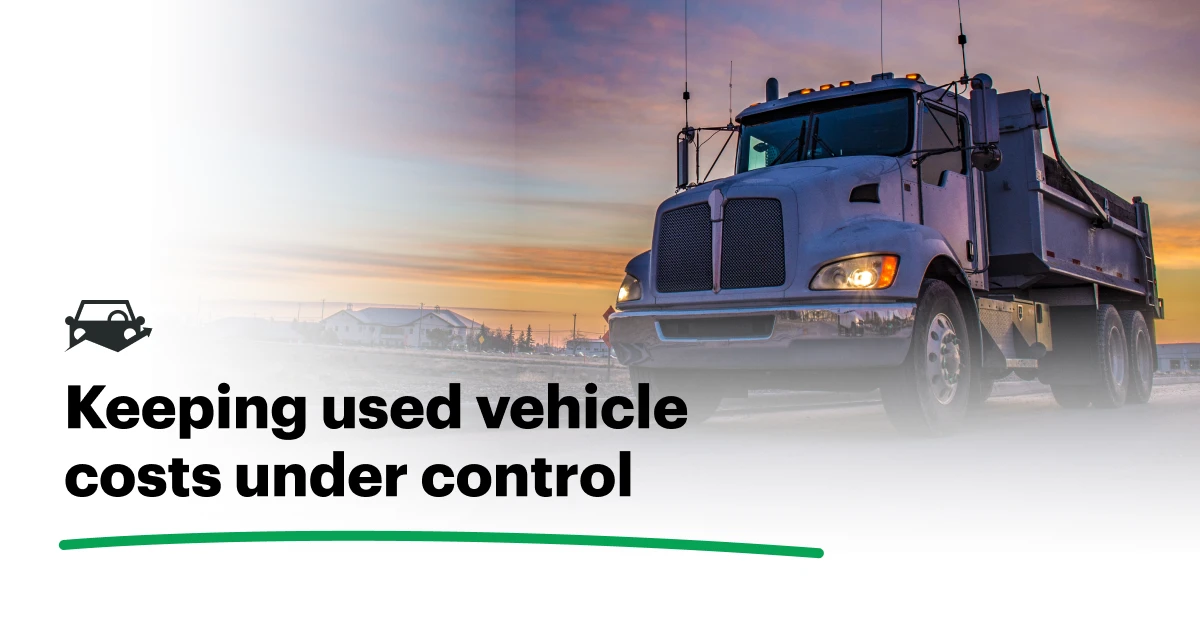Implementing a driver scoring plan can help fleets better understand how driver behavior impacts the operation — for better or worse — while also incentivizing driver engagement. Fair and easy-to-follow driver scoring programs not only help catch issues, but they provide drivers with a clear goals-and-rewards system, fostering improved performance.
.webp)
The safety and efficiency of fleet assets can make or break a fleet operation. Every mile driven, every delivery made, every passenger transported comes with its own set of challenges and risks. Ensuring the consistent operability and safety of your fleet is not just a goal; it's a necessity. But how can you monitor and enhance driver performance, reduce costs and bolster safety simultaneously? The answer? Driver scoring.
Driver scoring is a powerful tool for fleets of any size, in any industry. Simply put, driver scoring is a comprehensive evaluation of driver behavior and performance. It involves the systematic analysis of various driving parameters and habits to create a quantifiable score, which reflects a driver’s effectiveness behind the wheel.
Central to driver scoring are driver scorecards. These scorecards are a fleet's window into the daily activities of their drivers, monitoring and measuring driver behavior and providing insights into what’s working and what's not. Key performance indicators (KPIs) serve as the building blocks for these scorecards. These KPIs include metrics like speed, harsh braking, rapid acceleration, idle time and even adherence to traffic rules.
Driver scoring is not just about collecting numbers — it’s about using those numbers to drive improvements. The safety of your drivers — and passengers, if applicable — is priority one. Driver scoring helps identify risky behaviors, allowing for corrective action before accidents happen. Plus, driver scoring helps surface increased fuel consumption caused by driver behavior. By promoting safe, fuel-efficient driving habits, you can reduce asset wear and tear, leading to substantial cost savings in two of the largest cost centers for fleets.
In addition to improving safety and reducing maintenance and fuel spend, driver scoring helps fleets meet regulatory requirements, ensuring that your fleet adheres to industry standards and legal obligations.
Driver scoring begins with the collection of data from various sources, including telematics. This data encompasses a wide range of variables, from speed and location to vehicle diagnostics. When integrated with fleet management software (FMS), this data becomes consolidated with the rest of the fleet’s data, allowing you to pull comprehensive driver behavior-related reports in real time. Once the data is collected, it is meticulously analyzed to generate driver scores that can be shared with both drivers and managers, providing actionable insights into driving behavior.
Because driver scoring relies heavily on data analytics, many fleets are opting to use fleet technologies to streamline the process. Software can play a pivotal role in the collection and calculation of driver scores, including:
Effective driver scoring isn't just about crunching numbers, it’s about creating a culture of safety and continual improvement within your fleet. Here are a few considerations to take into account when implementing a driver scoring plan:
Driver scoring is an invaluable tool. By harnessing the power of data and fleet solutions, you can boost safety and efficiency while also reducing maintenance and fuel costs. Driver scoring helps surface driver issues in real time so the proper steps can be taken for correction, including training, ride-alongs and/or new/updated driver certifications.
Adopting driver scoring practices and leveraging technology is a strategic move that no fleet manager can afford to overlook. It’s not just about optimizing operations; it's about driving your fleet towards success.

For six weeks starting in mid-September, members of the United Auto Workers (UAW) labor union went on strike against Detroit's Big Three automakers: Ford, General Motors and Stellantis. General wage increases, cost-of-living adjustments and greater worker protections were at the top of the UAW's list of demands.
.webp)
Fleets that take preventive maintenance seriously don’t just save on operating costs by minimizing costly repairs. By keeping their vehicles in peak condition, they also maximize the fuel economy of their gas-powered assets.

For organizations looking to expand their fleet in an economical way, used vehicles are a great option. But to ensure procurement savings don’t eventually spin into maintenance budget overruns, fleets should keep an especially close eye on their pre-owned assets.